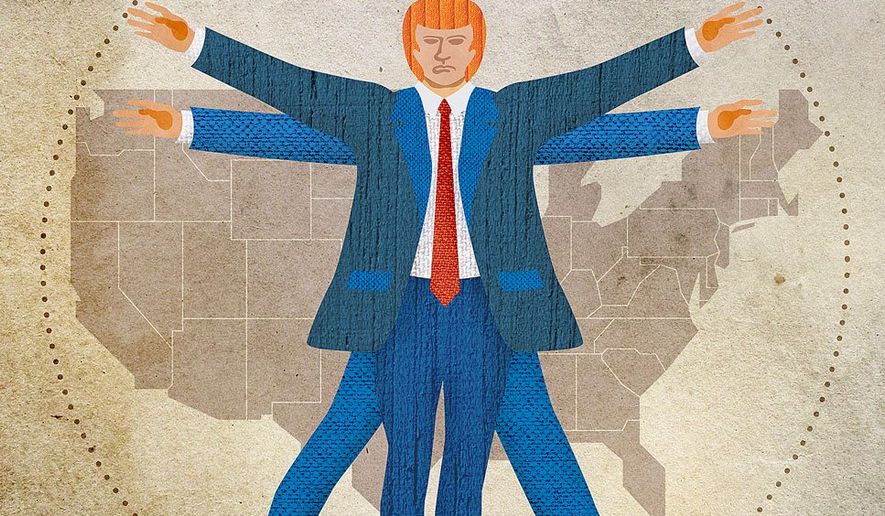OPINION:
Leaders in China and other trading partners are bracing for President-elect Donald Trump’s threatened 60% tariff on Chinese imports and 10% or 20% across-the-board tariffs. Weighing U.S. options, he should consider how the world has changed since he first ran for president on a protectionist platform and the connections between trade and security.
Both Mr. Trump and President Biden continued the policies of their predecessors.
President Barack Obama first blocked appointments to the World Trade Organization Appellate Body, marginalizing the global consortium.
Mr. Biden continued most Trump tariffs, and Mr. Trump will likely continue his predecessor’s new tariffs on electric vehicles, semiconductors and other strategically significant products.
China is reeling from a property meltdown and an exodus of foreign investment. The European Union is stuck in a web of excessive regulations and underinvestment in public infrastructure and private industry. Lethargic growth challenges European governments’ capacities to increase defense spending and implement measures to modernize their economies — only four of the world’s top 50 tech companies are European.
China, Russia, Iran and North Korea have forged a menacing axis.
Mr. Biden led NATO expansion, assembled a latticework of security alliances and fostered technology cooperation in Asia.
To prop up growth, China is flooding its export markets with subsidized manufacturers and technology-packed, inexpensive EVs, thanks to state aid.
China’s mercantilist policies and a cheap currency — the World Bank estimates the yuan-dollar exchange rate that would equate costs for goods in America and China at 3.81, not its current 7.23 — trade deficits on the United States, hardly anchored in comparative advantages.
Those distort resource allocation and retard rather than aid American growth.
History indicates tariffs don’t raise domestic prices by their full amounts.
The International Trade Commission estimated tariffs imposed on apparel and auto parts under Section 301 of the Trade Act, which permits presidents to impose duties in response to foreign unfair trade practices, increased import prices by 14.5% and 24.5%. But those raised competing domestic product prices by only 3.1% and 1.5%, combined domestic and import product prices by 4.3% and 2.3% and domestic production by 6.3% and 3%.
Mr. Trump raised tariffs on $300 billion in Chinese imports from 2.7% to 17.5%, and calamity didn’t follow. The one-time impact on inflation was 0.3%. Until COVID-19, Mr. Trump’s first-term economy accomplished full employment and 2.8% annual growth.
The overall effects of raising those tariffs further would depend on phasing in changes over several years, rebating tariffs to exporters, the treatment of third-country imports containing Chinese components and the European response. With steel and EVs, Europe followed suit to limit the diversion of Chinese products into its markets.
China would do as it is now with EVs: look to emerging markets such as Southeast Asia and Latin America. We’d be smart to better engage those nations too.
Also, slower growth in China would leave Beijing with fewer resources for its military buildup.
Mr. Trump may have few choices but to act because Congress is growing restive. Bipartisan support has emerged to revoke permanent normalized trade relations with China, which would impose the high tariffs mostly in place in the 1930s and generally fashioned for an economy as it was a century ago.
He suggested that Chinese companies set up production here, but that could meet with state-level resistance. Virginia Gov. Glenn Youngkin recently removed his state from consideration for a battery plant by the joint venture between Ford and China’s CATL.
The United States should increase defense spending from 3% of gross domestic product to 5% to meet challenges from China, Russia and Iran in the Pacific, Europe and the Middle East.
Tripling the average tariff on Chinese goods — assuming half of Chinese imports phase out — might raise $90 billion. That’s hardly enough for new defense spending or to finance his promised tax cuts.
Consequently, like it or not, Mr. Trump needs European military allies. The dealmaker may threaten them with 20% tariffs, but he’d be smart to use those to leverage the Europeans to prioritize building the integrated military capabilities they lack to more fully defend themselves with some American backstop.
China is making economic and strategic inroads in emerging economy markets with more technologically sophisticated products, sourcing raw materials and building ports, railways and other infrastructure.
Broadly taxing U.S. trade with emerging markets, Japan and South Korea would only play into China’s Asian strategy, limit markets for U.S. technology products — such as the artificial intelligence agent Agentforce developed by Salesforce — and reduce American influence with security partners in Asia.
It would be better to establish an American sovereign wealth fund to leverage U.S. private investment in emerging markets and negotiate agreements establishing a trading system outside the WTO without the benefit of Chinese participation, such as with Southeast Asia. More on that in a future column.
• Peter Morici is an economist and emeritus business professor at the University of Maryland, and a national columnist.




Please read our comment policy before commenting.